Top Rankings
Pittsburg School District ranks among the top 20% of public school district in Kansas for:
Category
Attribute
Diversity
Most diverse schools (Top 1%)
Community Size
Largest student body (number of students) (Top 1%)
For the 2025 school year, there is 1 public preschool serving 521 students in Pittsburg School District. This district's average pre testing ranking is 3/10, which is in the bottom 50% of public pre schools in Kansas.
Public Preschool in Pittsburg School District have an average math proficiency score of 32% (versus the Kansas public pre school average of 38%), and reading proficiency score of 27% (versus the 40% statewide average).
Minority enrollment is 44% of the student body (majority Hispanic), which is more than the Kansas public preschool average of 36% (majority Hispanic).
Overview
This School District
This State (KS)
# Schools
6 Schools
563 Schools
# Students
3,395 Students
175,366 Students
# Teachers
209 Teachers
12,675 Teachers
Student : Teacher Ratio
16:1
16:1
District Rank
Pittsburg School District, which is ranked within the bottom 50% of all 286 school districts in Kansas (based off of combined math and reading proficiency testing data) for the 2021-2022 school year.
The school district's graduation rate of 88% has increased from 84% over five school years.
Overall District Rank
#169 out of 286 school districts
(Bottom 50%)
(Bottom 50%)

Math Test Scores (% Proficient)
30%
29%
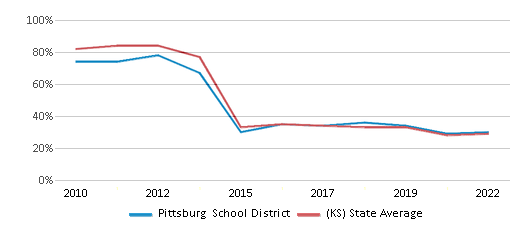
Reading/Language Arts Test Scores (% Proficient)
28%
32%
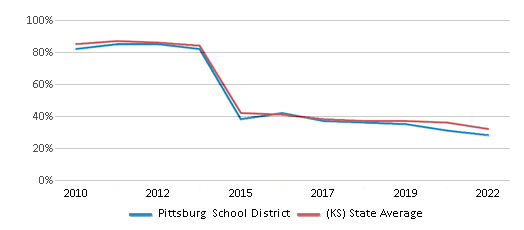
Science Test Scores (% Proficient)
30%
31%
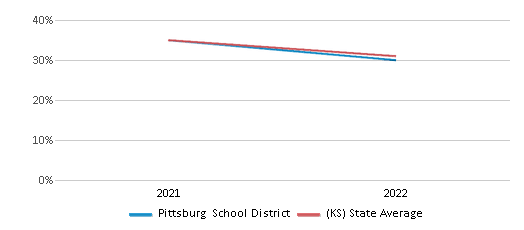
Graduation Rate
88%
89%

Students by Ethnicity:
Diversity Score
0.59
0.55
# American Indian Students
16 Students
1,258 Students
% American Indian Students
n/a
1%
# Asian Students
28 Students
3,742 Students
% Asian Students
1%
2%
# Hispanic Students
734 Students
35,106 Students
% Hispanic Students
22%
20%
# Black Students
128 Students
10,873 Students
% Black Students
4%
6%
# White Students
2,044 Students
112,046 Students
% White Students
60%
64%
# Hawaiian Students
132 Students
394 Students
% Hawaiian Students
4%
n/a
# Two or more races Students
313 Students
11,947 Students
% of Two or more races Students
9%
7%
Students by Grade:
# Students in PK Grade:
199
21,709
# Students in K Grade:
235
25,257
# Students in 1st Grade:
264
25,383
# Students in 2nd Grade:
241
25,757
# Students in 3rd Grade:
217
23,472
# Students in 4th Grade:
252
23,284
# Students in 5th Grade:
236
21,197
# Students in 6th Grade:
217
6,799
# Students in 7th Grade:
241
1,086
# Students in 8th Grade:
249
1,161
# Students in 9th Grade:
248
56
# Students in 10th Grade:
274
66
# Students in 11th Grade:
270
65
# Students in 12th Grade:
232
74
# Ungraded Students:
20
-
District Revenue and Spending
The revenue/student of $12,714 in this school district is less than the state median of $16,276. The school district revenue/student has stayed relatively flat over four school years.
The school district's spending/student of $17,387 is higher than the state median of $17,192. The school district spending/student has stayed relatively flat over four school years.
Total Revenue
$43 MM
$7,774 MM
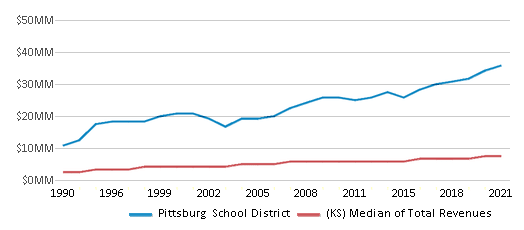
Spending
$59 MM
$8,211 MM
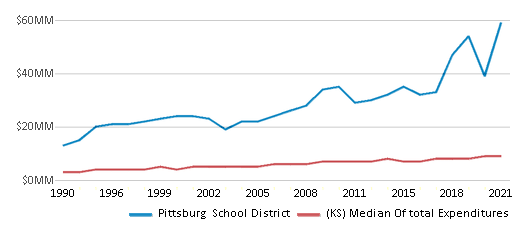
Revenue / Student
$12,714
$16,276
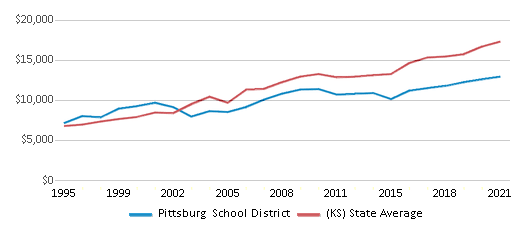
Spending / Student
$17,387
$17,192
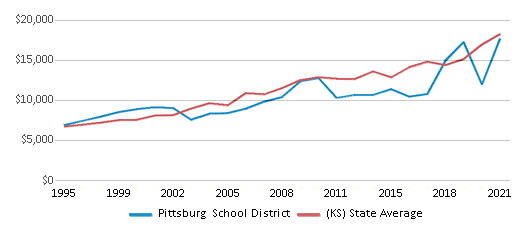
Best Pittsburg School District Public Preschools (2025)
School
(Math and Reading Proficiency)
(Math and Reading Proficiency)
Location
Grades
Students
Rank: #11.
Westside Elementary School
(Math: 30-34% | Reading: 25-29%)
Rank:
Rank:
5/
Bottom 50%10
430 West 5th
Pittsburg, KS 66762
(620) 235-3170
Pittsburg, KS 66762
(620) 235-3170
Grades: PK-5
| 521 students
Recent Articles

Year-Round Or Traditional Schedule?
Which is more appropriate for your child? A year-round attendance schedule or traditional schedule? We look at the pros and cons.

Why You Should Encourage Your Child to Join a Sports Team
Participating in team sports has a great many benefits for children, there is no doubt. In this article you will learn what those benefits are.

White Students are Now the Minority in U.S. Public Schools
Increasing birth rates among immigrant families from Asia and Central and South America, combined with lower birth rates among white families, means that for the first time in history, public school students in the United States are majority-minority. This shift in demographics poses difficulties for schools as they work to accommodate children of varying language abilities and socio-economic backgrounds.





